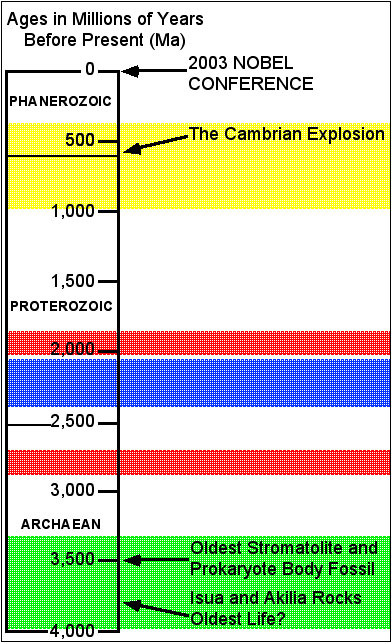The fossil record of stromatolites is startling in its vastness. Spanning three and a half billion years and every conceivable environment, stromatolites are trace fossils that record the interaction of microscopic organisms and the environment. Bacterial mats, and later algae, formed a template for cementation or trapping of mud and sand. Microbes would re-colonize the hard sediment shell and form a new layer and the cycle would start anew. Repetition would ultimately be preserved in an onion skin-like arrangement of successive layers.
Stromatolites achieved their greatest diversity of form during the Mesoproterozoic, about 1,000 Ma. They continued to dominate the fossil record until the late Neoproterozoic, when animals, perhaps grazers or substrate disturbers, began to proliferate.
The stromatolites in this display come from two areas. The sample from the Strelly Pool Chert of the Warrawoona Group is one of the oldest stromatolites ever discovered. Glassy cherts from the same formation have yielded the oldest prokaryote fossils, though there are recent articles questioning the biogenecity. The other sample is from the younger Mesabi Iron Range of northern Minnesota. Common in rock shops, these latter stromatolites have been named Gruneria biwabikia and have been suggested as the state fossil of Minnesota. Get out there and vote!
Quick Links to: Introduction Oldest Rocks on Earth Oldest Fossils Prokaryotes vs. Eukaryotes Oldest Eukaryotes Oxygenation of the Atmosphere Ediacaran Fauna Snowball Earth Oldest Skeletons Pre-Cambrian/Cambrian Boundary Links for more information
